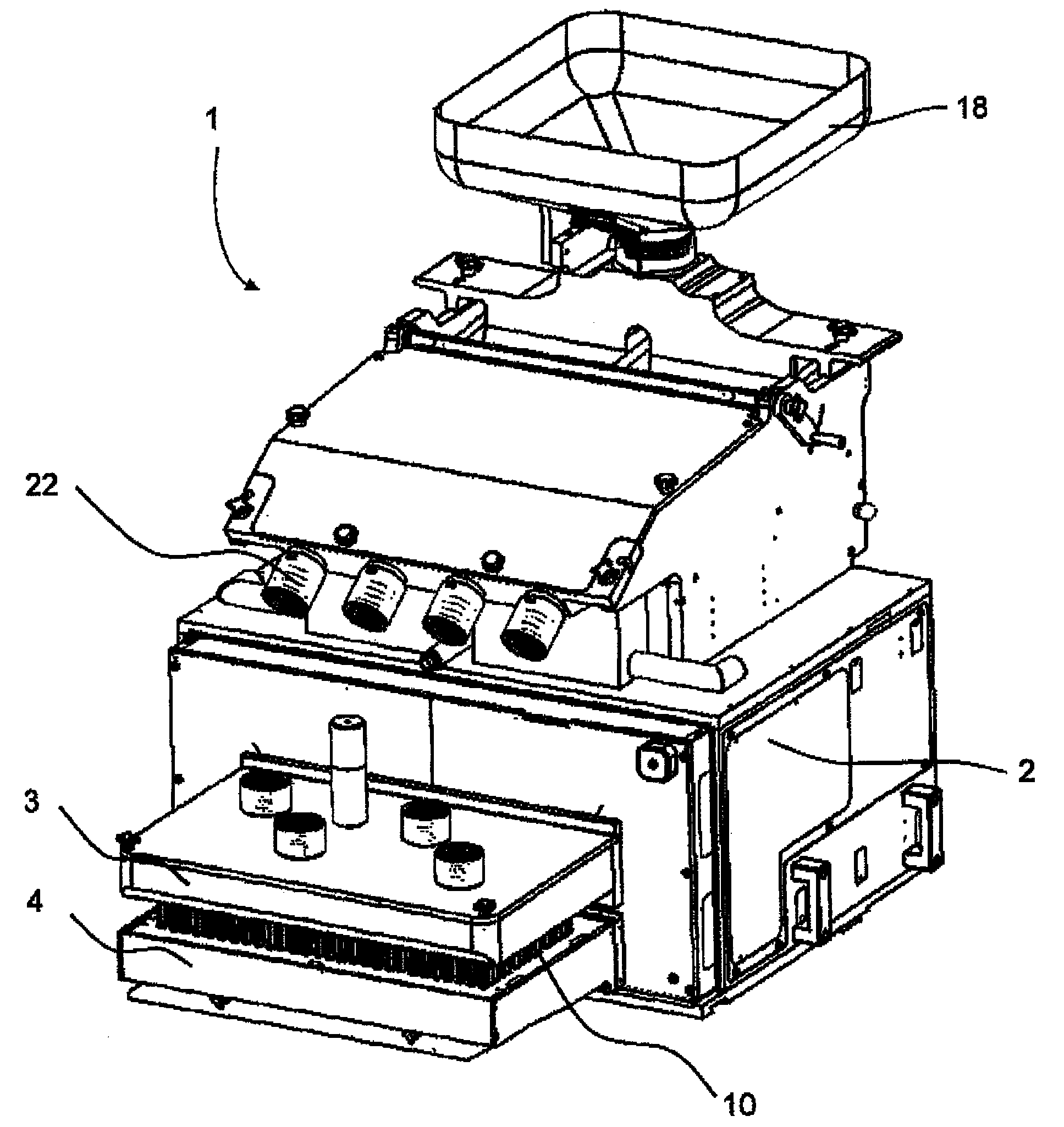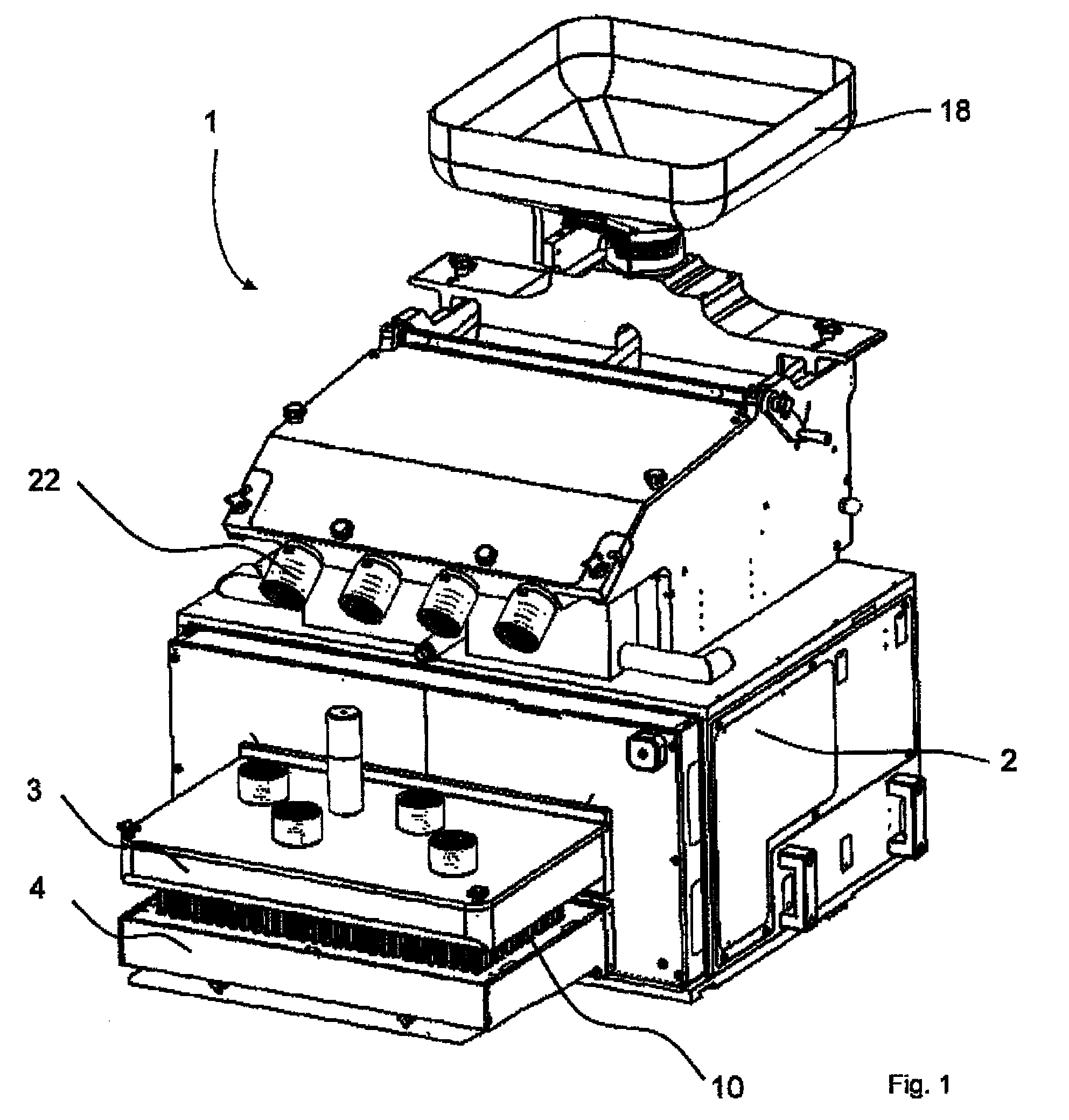Feeder for a thermoforming machine
a thermoforming machine and feed tube technology, applied in the direction of packaging, packaging bottles, individual articles, etc., can solve the problems of inability to reliably fill the filling tube present there, inability to precisely position the sorting plate with respect to the filling tube of the filling unit, and inability to distribute the products uniformly over its surface, etc., to achieve the effect of compensating manufacturing tolerances, simple relative mechanical adjustment of the hanger device, and positioned very accurately with respect to each other
- Summary
- Abstract
- Description
- Claims
- Application Information
AI Technical Summary
Benefits of technology
Problems solved by technology
Method used
Image
Examples
Embodiment Construction
[0059]FIGS. 1-6 show overview diagrams of a feeder 1, whereas the individual assemblies of the feeder 1 and the way in which they work together are described in the following figures.
[0060]The feeder 1 shown in FIGS. 1-6 serves to transfer products, which are made available as bulk material, in a controlled manner into the pockets of a continuously or discontinuously conveyed web of sheeting. This feeder 1 comprises a supply container 18, which holds the products as bulk material, from which container the products are transferred to a sorting plate 3, which sorts the products in such a way that they assume the pattern of the pockets, i.e., the pattern of pockets formed in the web of sheeting. The sorting plate 3 comprises openings 13 (FIG. 4) in the bottom, into which the upper ends of filling tubes 10 project. The product items are sorted into these upper ends. At least one blocking finger, which serves to release specifically the lowermost product item from the filling tube 10, is...
PUM
 Login to View More
Login to View More Abstract
Description
Claims
Application Information
 Login to View More
Login to View More - R&D
- Intellectual Property
- Life Sciences
- Materials
- Tech Scout
- Unparalleled Data Quality
- Higher Quality Content
- 60% Fewer Hallucinations
Browse by: Latest US Patents, China's latest patents, Technical Efficacy Thesaurus, Application Domain, Technology Topic, Popular Technical Reports.
© 2025 PatSnap. All rights reserved.Legal|Privacy policy|Modern Slavery Act Transparency Statement|Sitemap|About US| Contact US: help@patsnap.com



